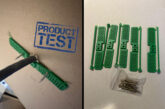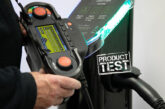
Motoring correspondent George Burrow reports on how life is about to begin all over again for the young at heart Mitsubishi L200 pick-up.
It seems like just yesterday that Mitsubishi decided to update its no-nonsense L200 pick-up truck, but it has, in fact, been three years, during which time the segment has not only got busier, but also a lot more luxurious. Not wanting to be left behind, Mitsubishi has revamped the L200 once again for a new sixth generation vehicle.
Fresh on the agenda has been a dramatic new redesign to make the slightly wimpy looking L200 a more macho affair. There’s also greatly improved driver safety systems and a brand new automatic gearbox in the mix. It might not sound like much, but in total it amounts for more than 2,400 changes to this new model – no mean feat for a truck that would otherwise have been expected to last seven or eight years, rather than three.
The stand-out change is the new front styling, with the L200 adopting a much more aggressive appearance to integrate better into the current pick-up truck market. The key change is the new headlight position which is now 100mm higher than the previous model, and a full 700mm from the ground. Not only does this help to strengthen the looks but more importantly is said to improve visibility by bringing the lights above the wading height depth. Side and rear panels have also been changed with a chunkier rear light cluster the most easily identifiable alteration.
Given the swiftness of this update, a smart move has been keeping the useable elements of the load bed unchanged so that any existing accessories can be easily transferred. As a result, the important weights and dimensions remain static too with a 1,040kg payload for an L200 double cab and a maximum load length of 1,520mm and enough width for a Euro pallet.
While there is a new 6-speed automatic gearbox with an improved Super-Select 4WD system, something that hasn’t changed is the L200’s engine. Mitsubishi are as yet undecided upon what exact engine the new L200 will have, so during our test drive at the launch event it was still being powered by the current 2.4-litre 178hp turbodiesel. For now, the new gearbox is a solid upgrade, adding an extra gear which lowers both noise and fuel consumption while also improving the shifting smoothness.
The rest of the changes are reserved to the way the L200 performs on- and off-road. The rear suspension has been upgraded, with bigger shock absorbers, while the front receives larger brakes. Stopping power hasn’t been an issue for the L200 previously, but the new brakes certainly get the job done and are part of the new “Engineered Beyond Tough” ethos that Mitsubishi is adopting for this L200.
The improved rear suspension is a welcome addition to the vehicle’s on-road performance, which previously was at the firmer and bouncier end of the spectrum, but is now much smoother. It’s not perfect, but it’s a big step forward over the current truck.
Enhancements to the 4WD system, which already includes both high and low range transmissions, means that you can now select between specific terrains with Gravel, Mud & Snow, Sand and Rock settings. Each of the modes alters the throttle response and traction systems to optimise the L200’s performance across the surfaces, something it now does effortlessly – providing you remember to rotate the dial into the correct mode.
Off-road driving is made even easier with the addition of a new Hill Descent Control system which works differently to other manufacturers in that it will maintain the speed of your descent at whatever speed you’re doing (providing it is less than 12mph), rather than let you descend at its own predetermined maximum velocity. It’s a really simple and safe way to navigate a slope and doesn’t come with any nasty surprises like speeding back up to the maximum descent speed.
In a working environment safety is always important, and Mitsubishi has added several new features to improve the L200. There’s now a 360-degree bird’s eye camera – great for seeing obstacles in front of you or at your sides, as well as a Blind Spot Warning detection system with Lane Changing Assist, forward collision prevention, brake assist and Rear Cross Traffic Alert – which warns of any collision as you back-out of a space.
Perhaps the most useful feature, however, is the tongue-twisting Ultrasonic Misacceleration Mitigation System which stops acceleration when manoeuvring in tight spaces if it believes a collision is about to occur – hopefully no more expensive shunts into a hidden pallet of blocks, then.
A pick-up truck also needs to be a useable and comfortable office space, which is why Mitsubishi has added a wealth of USB ports to the L200. It’s not the most interesting of cabin upgrades, but there are now two USBs in the centre console and two more for those in the rear seats.
The rest of the changes are fairly unremarkable, with some soft-touch padding added around the transmission tunnel and grab-handles mounted to the B-pillars. Rounding off the changes inside is a new ventilation system in the roof which helps recirculate air from the front of the cabin to the rear occupants. This provides a slight breeze that might keep hot-and-bothered rear passengers slightly happier.
The L200 has always been built as a working vehicle, and a tough one at that, but rather than shy away from its pedigree the 2019 changes look to cement that opinion and separate it further still from its softer, more road-focused rivals. The macho new appearance and uprated equipment go a long way to both differentiate and elevate the L200 beyond its current rank in the ever-so competitive pick-up pecking order.
For further information on the Mitsubushi L200 pick up visit: www.mitsubishi-cars.co.uk









